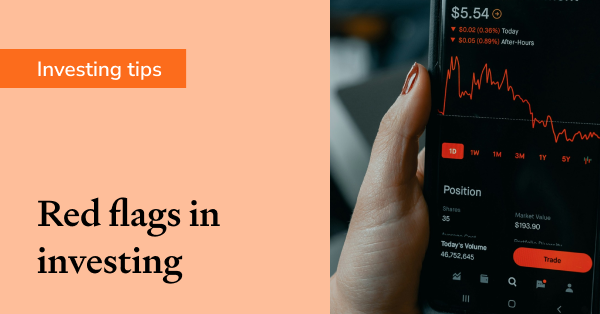What are short-term vs long-term capital gains?
When looking to earn returns, many people turn to investments, only to realise that if they’re not careful, their profits can be eaten up by capital gains tax (CGT). In particular, Australians are subject to short-term capital gains and long-term capital gains, which are both taxed at different rates. In this blog post, we will focus on Australian CGT, explaining the difference between short-term and long-term capital gains, along with strategies to minimise CGT, and how investors can use Sharesight to calculate their CGT.

What are capital gains?
Capital gains occur when you make a profit on an asset you’ve sold, which could be anything from stocks and cryptocurrency to real estate and jewellery. The sale of an asset is known as a capital gains tax event. There are other capital gains tax events, such as the loss or destruction of an asset, but in this article we’ll focus purely on selling.
There are two types of capital gains generated by capital gains tax events: short-term capital gains and long-term capital gains. Both are taxed at different rates, depending on how long you held the asset before selling it.
What are short-term capital gains?
Short-term capital gains can be made on any assets you acquire and sell within twelve months. This includes things like real estate, stocks, cryptocurrency leases, licenses, foreign currency, and collector’s items such as jewellery.
What are long-term capital gains?
Long-term capital gains are any assets you’ve made a profit on which you owned for more than a year before selling. Again, this can be anything from real estate to gold – or any investment which isn’t your main residence, vehicle, or a depreciating asset such as business equipment.
How are long-term and short-term capital gains taxed differently?
Long and short-term capital gains are taxed differently. To calculate the amount of capital gains tax you will need to pay, you need to know the following details of the asset sale:
-
How much the asset cost.
-
Whether you owned the asset for more or less than one year.
-
The price you sold your asset for.
-
What your current taxable income is (capital gains tax is added to your current taxable income and may push you into a higher bracket).
-
How much you invested into your asset before you sold it. For example, if you sold an investment property, you will need to know the amount spent on renovations, real estate agents, landscaping, and so on, as this will be used to calculate your capital gains tax.
If you have made a short-term capital gain, you will be required to pay tax on the full amount of the profit you made. The profit is the difference between your initial investment and how much you sold the asset for. These earnings will be taxed at your personal income tax rate.
If however, you held the asset for over a year before selling and made a long-term capital gain, then you only pay capital gains tax on 50% of the capital gain at the standard income tax rates. This means half your earnings on that asset are tax-free.
What are the exceptions to the capital gains tax rate for long-term gains?
While the profit you make on any investment will be taxed at your personal income tax rate, some items are exempt from capital gains tax. These include:
-
Your primary residence (although investment properties are subject to the tax).
-
Your personal, daily use vehicle.
-
Assets acquired before 20 September 1985.
-
Collectibles purchased for $500 or less, or collectibles that were worth $500 or less when acquired (even if you paid more at the time).
-
Depreciating assets used solely for taxable purposes (i.e. anything that declines in value over its lifetime such as computers, tools, and furniture).
-
Wins made when gambling or in competitions.
How can you minimise capital gains taxes?
There are a variety of ways to minimise your capital gains tax, including:
Keeping an asset for more than a year
If you hold an asset for over twelve months, this will reduce the capital gains tax you need to pay. This only applies to individuals – companies must still pay full tax on a long-term capital gain.
Offset your capital gain with a capital loss
A capital loss can be offset against any capital gains made in the current financial year, or it can be carried forward to offset capital gains you may make in the future. Capital losses, however, cannot be used to offset income.
Have residential properties revalued before placing them on the rental market
Having your property revalued before renting it out means you will only be liable for the capital gains you make on top of the new valuation, not the profit made on top of the property’s initial value when you bought it.
Small businesses offer capital gains tax concessions
Assets belonging to small businesses are often eligible for certain concessions when sold.
Include the costs of acquisition and disposal when calculating capital gains tax
If you reduce your cost base, you reduce your capital gain by including the costs associated with purchasing and selling the asset. Capital gains tax on a property, for example, can be reduced by offsetting agent fees, rates, repairs and insurance costs.
Do you have to pay capital gains if you reinvest?
Unfortunately, you still need to pay capital gains tax even if you reinvest the profits you made on your investment. There are, however, ways to avoid paying capital gains tax on certain assets like houses. For example, if you live in a property immediately after acquiring it, you may be exempt from capital gains tax. You may also be exempt if you purchased your property as a member of a self-managed super fund, and bought your house with a separate SMSF property home loan.
How do I keep track of my capital gains and losses?
Sharesight’s Capital Gains Tax (CGT) Report allows you to view your capital gains and losses at a glance, eliminating the need for manual calculations that can be complex and subject to error. Sharesight’s CGT calculator is also an easy way to determine long-term and short-term capital gains made on shares as per the Australian Taxation Office rules. This convenient report can be run over any date range, and even allows you the option to carry forward losses from the previous reporting period.
Keep track of your CGT with Sharesight
Join thousands of Australian investors already using Sharesight to manage their investment portfolios. With Sharesight you can:
-
Automatically track your dividend and distribution income from stocks, ETFs, LICs and Mutual/Managed Funds – including the value of franking credits
-
Use the Dividend Reinvestment Plan (DRPs/DRIPs) feature to track the impact of DRP transactions on your performance (and tax)
-
See the true picture of your investment performance, including the impact of brokerage fees, dividends, and capital gains with Sharesight’s annualised performance calculation methodology
-
Run powerful tax reports to calculate your dividend income with the Taxable Income Report, plus calculate your CGT obligations with Sharesight’s Australian Capital Gains Tax Report and Unrealised Capital Gains Tax Report
![]()
The above article is for informational purposes only and does not constitute a product recommendation, taxation or financial advice and should not be relied upon as such. Please check with your adviser or accountant to obtain the correct advice for your situation.
FURTHER READING

Announcing the Sharesight Fintech Scholarship's 2024 winner
We are pleased to announce the 2024 winner of the Sharesight Fintech Scholarship, Temiremi Egwuenu, who is studying Applied Finance at Macquarie University.

Effortlessly track clients’ trades with Sharesight and Desktop Broker
Sharesight has integrated with Desktop Broker, allowing advisers to have their clients’ trading data automatically synced to Sharesight’s portfolio tracker.

Red flags: When should you avoid investing in an asset?
This article explores some of the “red flags” you should look out for when considering an investment for your portfolio.